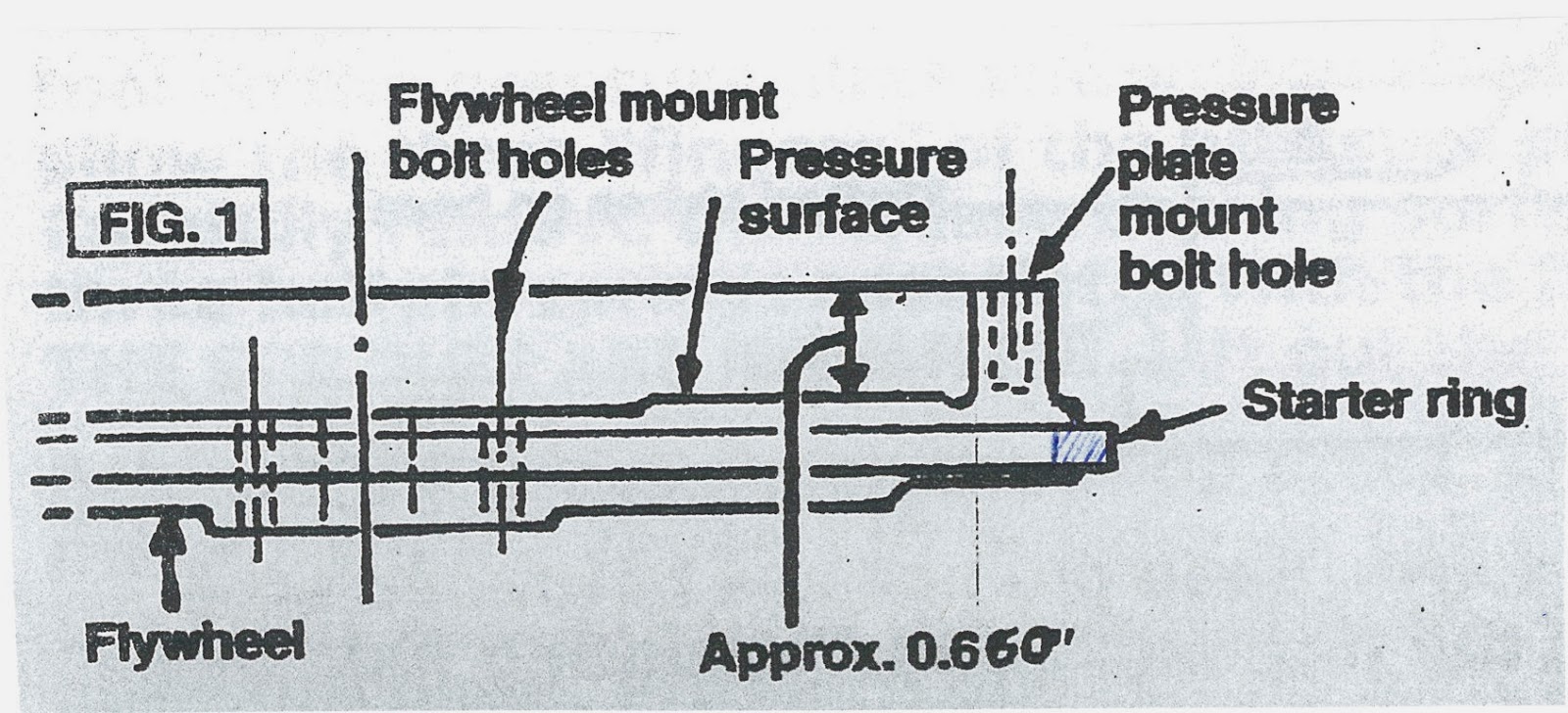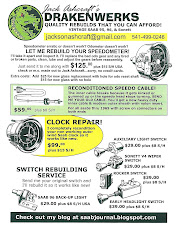This is a Volkswagen Vanagon speedometer--late version--all laid apart. The plates in red are two of about 40 special mounts and tools I've built for working on all manner of speedometers. On the left, the plastic main mount, and in its center, the magnetic drive for the speed needle. UNDER the light color, round housing--barely visible--is the worm drive gear for the odometer portion of the unit.
At the top, orange colored, is the printed circuitry for counting off the miles driven so a warning light can come on urging the Vanagon owner to boogie to a V W dealership and spend a lot of money to have a tech push a reset button and turn off the warning light. This B.S. was done in the name of lowered emissions. Dealerships loved it. The owners? Not so much.
To the right, the dual register odometer assembly with its plastic framework. Previous Vanagon speedos had an aluminum framework, so you see the result of company bean counters at work. Look at the BOTTOM, main, register. On the right end you see a white gear. On the left is a much smaller, yellowed gear. Both are plastic and both tend--with age and jillions of miles of use--to get tired and release their press-on fit with the register shaft. Result? No odometer activity, though the speed reading may still work OK.
The FIX is to replace the larger gear, and in this photo the white gear is a new one that I just installed. Additional FIX is to replace the small drive gear on the left, which I have also done in this photo. The "innards" are ready to be carefully lubricated with modern temperature stable, non-hardening lubricants and reassembled.
According to ancient V W Service Bulletins, these late model Vanagon speedos can get noisy. The problem is that the wee bushing holding the speed needle shaft [see the center of the round housing in the main mount, in the photos above] gets worn badly, as the miles build up. This lets the magnetic "can" below the bushing to move around, touching the outer housing, and causing a noise that drives m'lady bananas. I have a FIX for this, too, but this particular speedometer didn't need it.
M'lady can drive this one a couple hundred thousand more miles before it drives her bananas.
Tuesday, January 7, 2014
SAAB V4 FLYWHEEL/PRESSURE PLATE
Saab V4 flywheels are, at the youngest, 40 years old and virtually ALL of them must have their pressure surface [see drawing, above] lightly machined to remove damage from clutch slippage or chatter. A critical dimension of 0.660" from the pressure surface to the pressure plate mounting surface must be maintained. If this distance is NOT maintained, the aft surface of the release plate [the hexagonal flat plate in the center of the pressure plate [see photo, below] will not be in the correct fore/aft position. That surface must be 0.125" to 0.140" aft of the three flat pressure plate surfaces [the ones with two big holes, each--see photo below]. If not, the clutch will NOT release, and the release bearing arms will strike the surface of those same three flat pressure plate surfaces. NOT good.
This customer's machinist had machined the pressure surface and the pressure plate mount surface allright, but the measured distance was 0.670", not 0.660", which allowed the hexagonal release arm plate to sit forward too far, down in between the 3 flat plates [the ones with two big holes, each]. Although the clutch disc and the pressure plate were both new, the clutch would NOT release and the release bearing arms hit the pressure plate. The customer sent the whole schmere to me for correction.
There are two solutions: 1] Machine the flywheel to get the critical dimension to 0.660", or 2] Shim the flywheel. This is a shimmed flywheel/clutch/pressure plate assembly.
I used a special tool in my shop press, disassembled the new pressure plate and added 0.030" valve spring shims under each of the six coil springs in the pressure plate. This was to compensate for the shim 0.024" plates [in red, in the photo] that I fitted under the pressure plate mount bolts. The 0.024" shim plates moved the pressure plate so the release bearing plate was in the correct position--0.125" aft of the three flat plates. HOWEVER, adding the 0.024" shim plates takes too much mechanical clamping action off the clutch disc and the clutch will slip. The 0.030" valve spring shims restore the mechanical clamping action [and adds just a touch more than stock], so the clutch works just fine and the releases properly.
Interesting "fix" for improper machining.
This customer's machinist had machined the pressure surface and the pressure plate mount surface allright, but the measured distance was 0.670", not 0.660", which allowed the hexagonal release arm plate to sit forward too far, down in between the 3 flat plates [the ones with two big holes, each]. Although the clutch disc and the pressure plate were both new, the clutch would NOT release and the release bearing arms hit the pressure plate. The customer sent the whole schmere to me for correction.
There are two solutions: 1] Machine the flywheel to get the critical dimension to 0.660", or 2] Shim the flywheel. This is a shimmed flywheel/clutch/pressure plate assembly.
I used a special tool in my shop press, disassembled the new pressure plate and added 0.030" valve spring shims under each of the six coil springs in the pressure plate. This was to compensate for the shim 0.024" plates [in red, in the photo] that I fitted under the pressure plate mount bolts. The 0.024" shim plates moved the pressure plate so the release bearing plate was in the correct position--0.125" aft of the three flat plates. HOWEVER, adding the 0.024" shim plates takes too much mechanical clamping action off the clutch disc and the clutch will slip. The 0.030" valve spring shims restore the mechanical clamping action [and adds just a touch more than stock], so the clutch works just fine and the releases properly.
Interesting "fix" for improper machining.
Subscribe to:
Posts (Atom)


